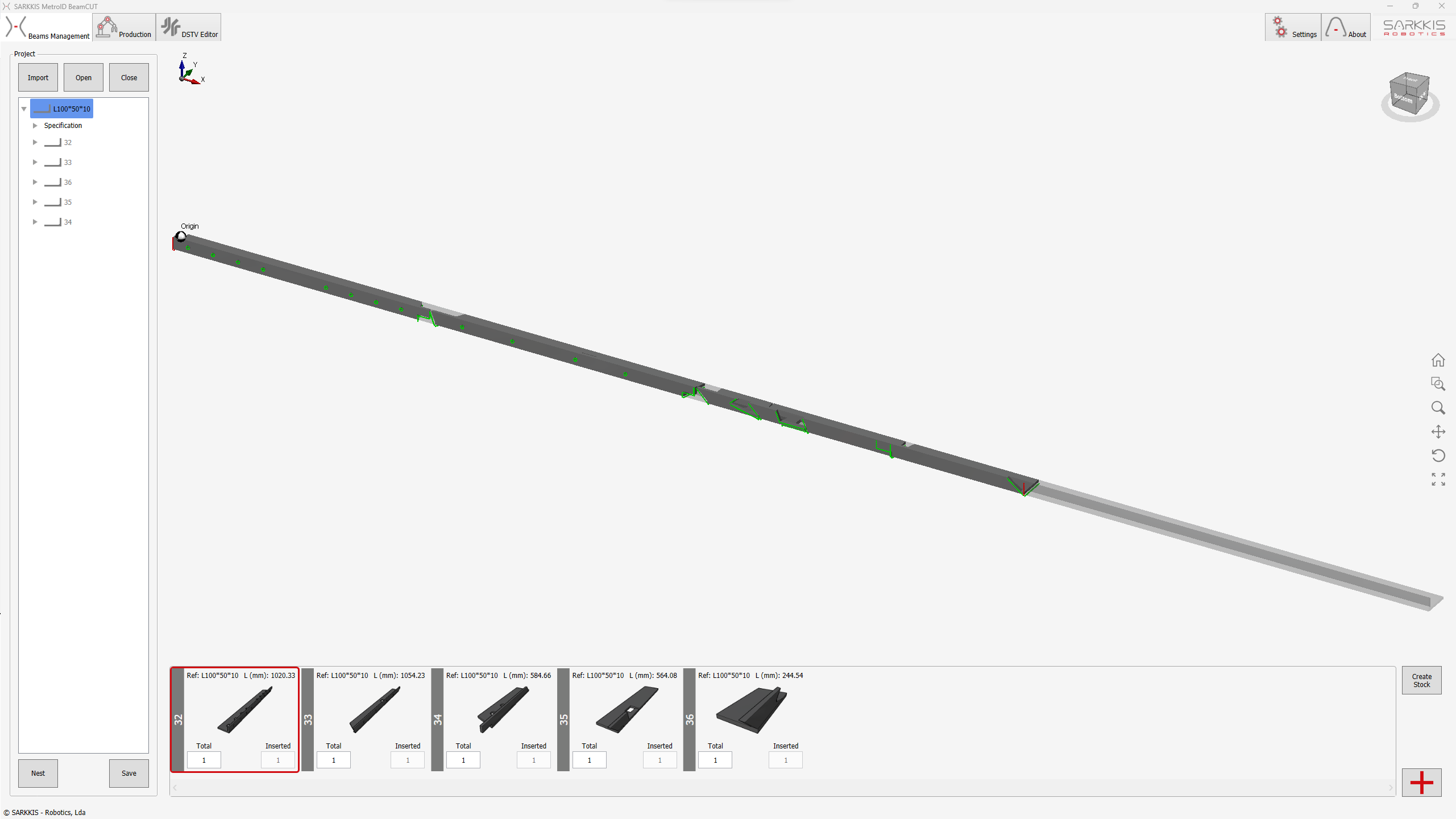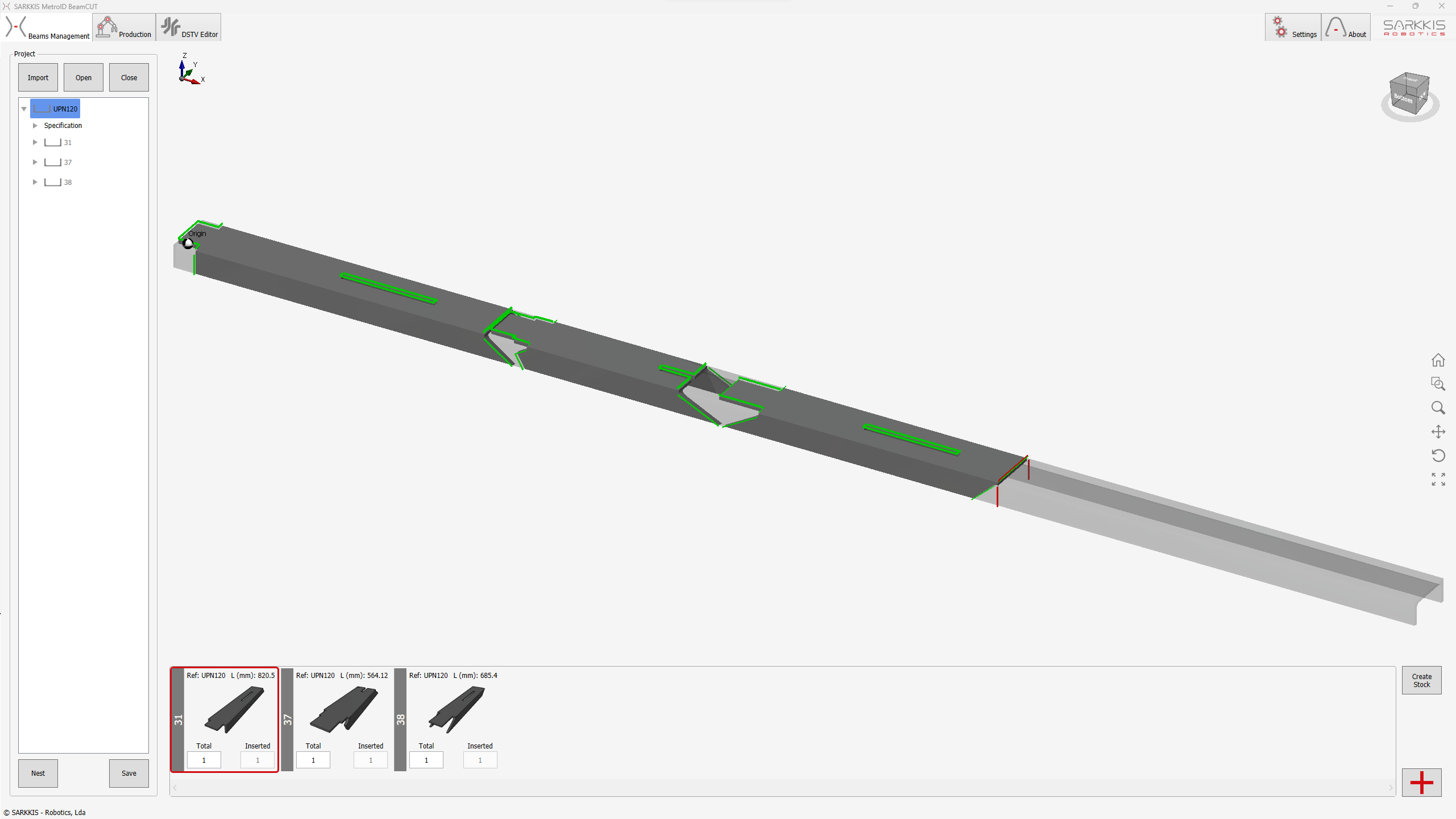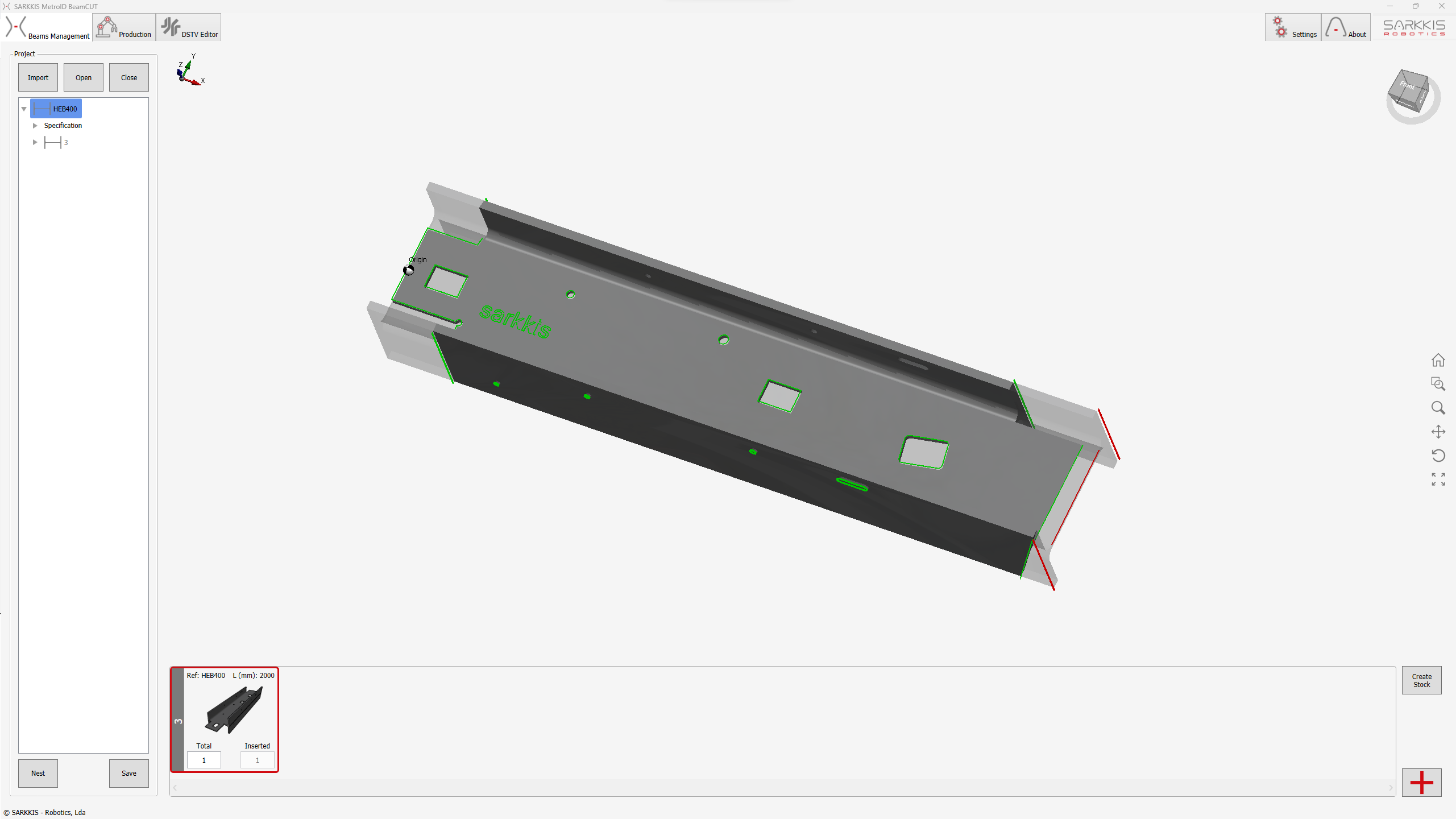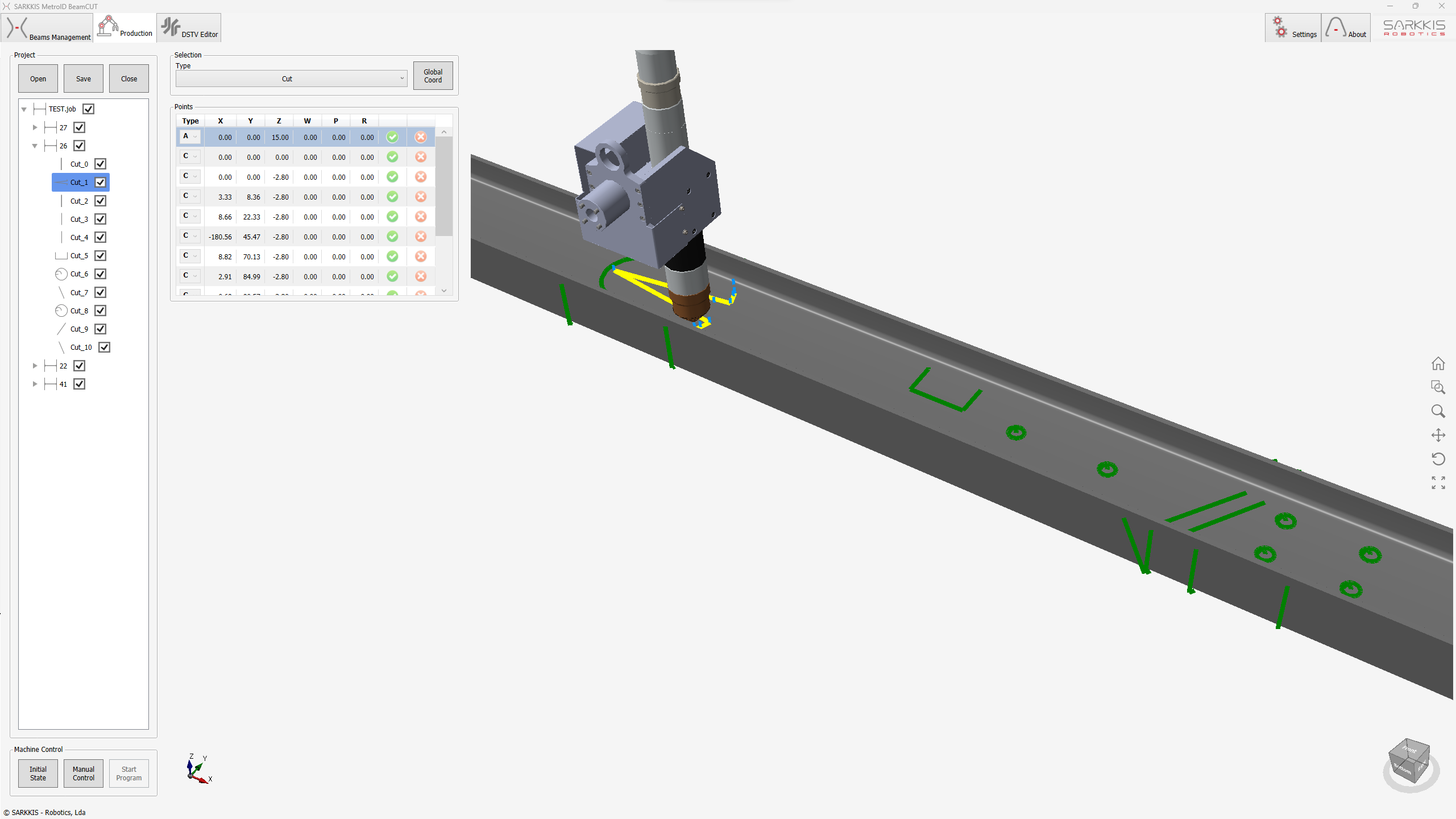Beam Cutting Robot Software
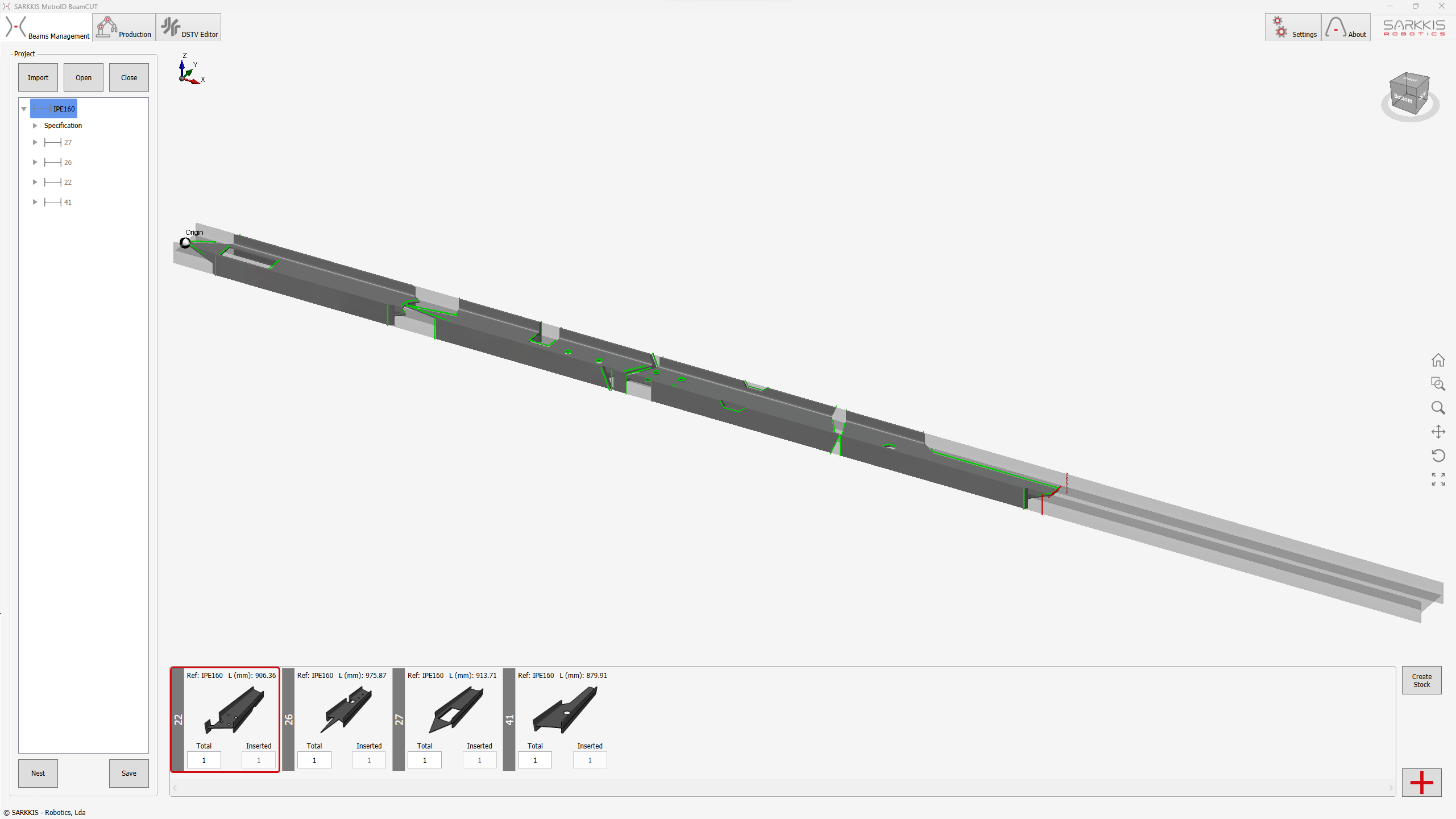
Starting from structural steel detailing files, MetroID BeamCUT transform structural profile geometric data into highly efficient beam cutting robot programs.
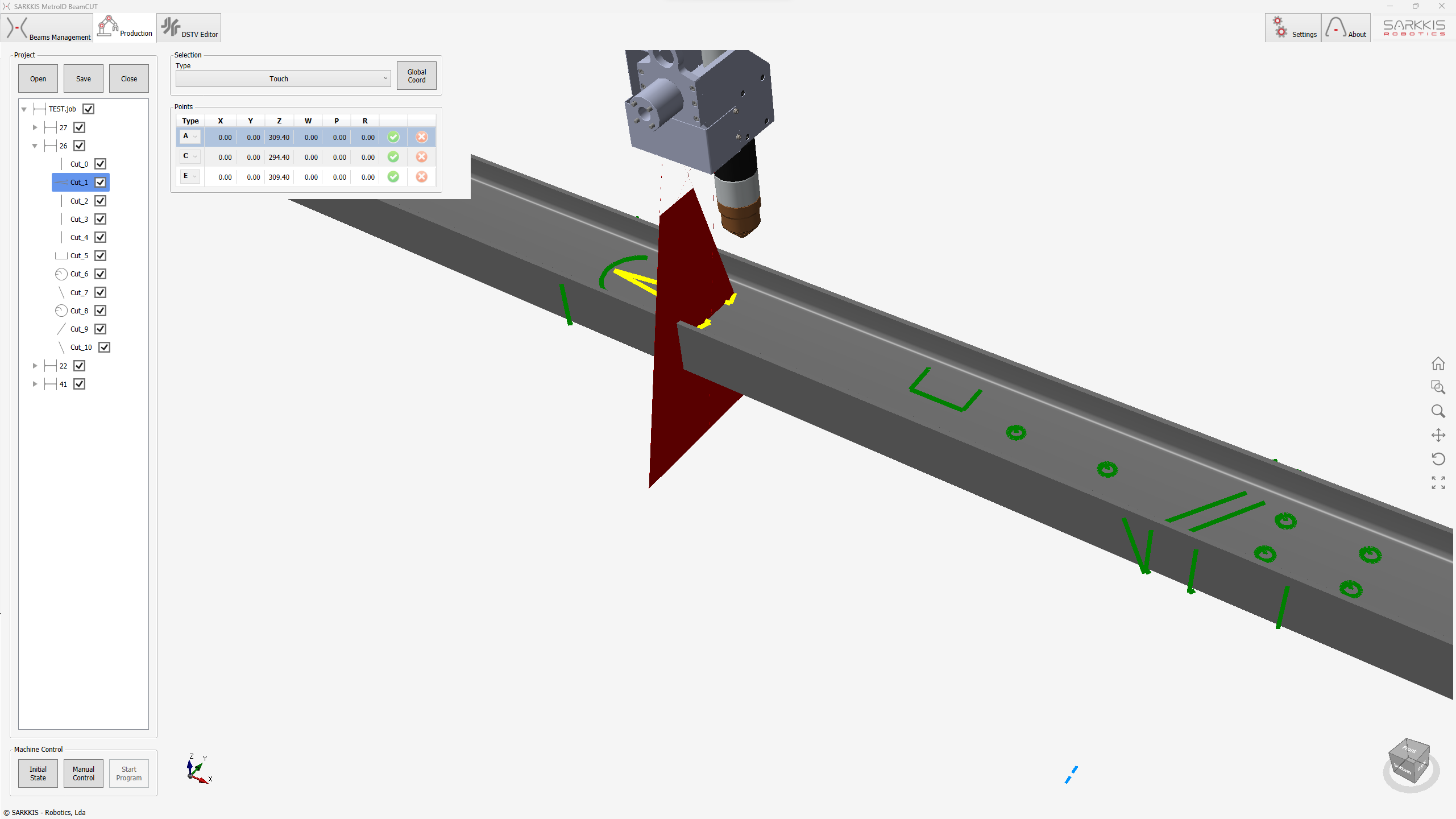
- BIM and DSTV file import.
- Nesting beams reducing material waste.
- Advanced collision free path planning.
- Efficient beam cutting robot programs.
Using files generated from Tekla®, SDS/2®, Autodesk™ Revit and similar, MetroID BeamCUT generate efficient robot programs for plasma cutting, supporting communication modules that allow the integration of different plasma sources. Plasma cutting parameters have already been developed for all major plasma cutting brands, including Hypertherm® or ESAB®, Kjellberg®, but can be customized to the client specific equipment. MetroID BeamCUT is a fully featured robotics software that generates ready-to-run cutting robot programs. It includes advanced path-planning algorithms that produce collision-free cutting robot programs, which means one click from the software to production. No simulation is required to verify the quality of the robot programs. MetroID supports all major robotic brands, including ABB, FANUC, Motoman, Kuka, COMAU, but can be customized to any client specific equipment.
Main features:
- DSTV file format import and management (.nc, nc1 or .xml).
- IFC 4.0 file format.
- 3D profile modeling and 2D detailed view.
- Designing robot tasks that include groups of cuts and specific plasma parameters.
- Project-oriented workflow.
- Customize work cell parameters.
- Multilanguage user interface.
- Integrated process parameters databases.
- Scribing and marking (optional).
- Task sequencing and continuous cutting (optional).
- MetroID DSTV Editor (optional).
- Advanced collision-free path planning.
- Efficient beam cutting robot programs.
MetroID BeamCUT supports IFC files.
Since 2015 MetroID BeamCUT fully supports the IFC file format. This major upgrade allows this software application to be completely integrated in the new digital era for steel construction. IFC is an open file format specification, platform neutral, that is not controlled by any vendors. It is an object-based file format with a data model developed by buildingSMART (formerly the International Alliance for Interoperability, IAI) that facilitates the interoperability in the architecture, engineering, and construction industry. it is commoncly used as collaboration format in the Building Information Modelling based projects. The IFC model specification is powerful, superseding the limitations of DSTV or HGG formats, and is an official International Standard ISO 16739:2013.
Screenshots:
Example Integration Videos:
Related products
PCS600
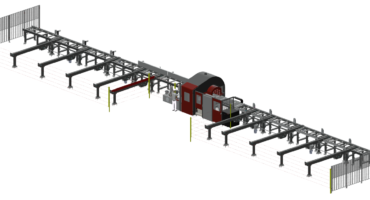
Intelligent robotics, outstanding productivity!
Furthermore: sarkkis.robotics@sarkkis.com

